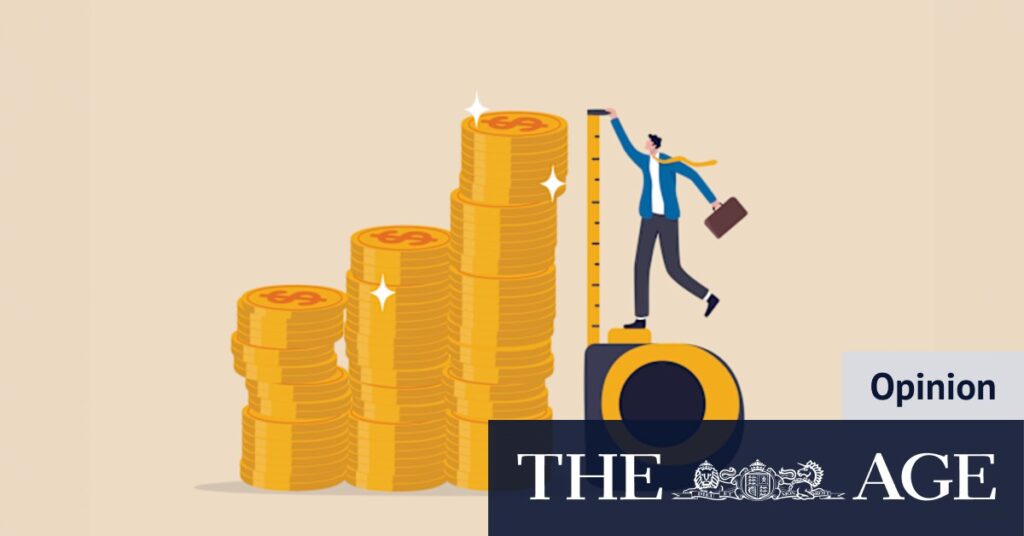
Economists, often perceived as the epitome of rationality, are not immune to the whims of trends and fashions. This observation rings true when examining the evolution of their concerns regarding Australia’s financial interactions with the global economy. Once obsessed with the nation’s financial dealings, many economists today seem indifferent, as evidenced by the lack of attention given to quarterly “balance of payments” reports, which encapsulate Australia’s financial exchanges with other countries.
However, two notable exceptions stand out: Penny Smith from the Reserve Bank and John O’Mahony of Deloitte Access Economics. Both have shed light on Australia’s shifting financial status. O’Mahony, in a revealing paper, categorized wealthy countries based on their “net international investment position,” identifying them as either creditor or debtor nations. Historically, Australia has been grouped with debtor nations like Canada and New Zealand. Yet, O’Mahony suggests that Australia may be transitioning into a “switcher nation,” potentially moving from a global debtor to a creditor.
The Shift in Australia’s Financial Position
Penny Smith highlighted an “extraordinary decline in Australia’s net foreign liabilities.” From a peak of 63% of GDP in 2016, these liabilities have decreased to 24%, the lowest since the mid-1980s. This shift is largely attributed to the Keating government’s 1992 introduction of compulsory superannuation, a pivotal factor in this transformation.
Historically, economists were particularly concerned in the late 1980s and early 1990s, following the 1983 decision to float the Australian dollar. The current account deficit expanded significantly, averaging 4.5% of GDP in the 12 years post-float, sparking fears of unsustainable foreign debt levels.
Understanding the Historical Concerns
During this period, the balance of payments figures were closely scrutinized, with media figures often criticizing the government for perceived fiscal irresponsibility. This anxiety persisted until Professor John Pitchford of the Australian National University argued that international borrowing and lending were private sector matters, occurring between “consenting adults” who should bear the consequences of their financial decisions.
In retrospect, as Smith observed, the economy was adjusting to the removal of capital flow controls, a remnant of the fixed exchange rate era. The float allowed both foreign investments in Australia and Australian investments overseas to flourish.
The Role of Compulsory Superannuation
The introduction of the “superannuation guarantee” by Paul Keating and Bill Kelty aimed to provide workers with a better retirement option than the age pension while encouraging national savings. Unlike post-World War II schemes in other countries, Australia’s system channels contributions into private sector super funds for investment, with eventual payouts during retirement.
This approach has significantly increased national savings, surpassing those of other debtor nations. The superannuation scheme’s success is evident in the accumulation of $4.2 trillion in savings, with projections by O’Mahony suggesting a potential rise to $38 trillion by 2063.
“Our super savings now total $4.2 trillion, with O’Mahony estimating they could be as high as $38 trillion by 2063.”
Impacts on International Trade and Investment
Since June 2018, Australia has consistently recorded a surplus in international trade in goods and services. Although the current account deficit persists, it has shrunk to approximately 2% of GDP. In the past, high net foreign liabilities were due to substantial foreign equity investments, particularly in the mining sector. However, this trend is reversing.
Australia’s net foreign equity assets, valued at $760 billion, now offset a foreign debt of $1420 billion, reducing net foreign liabilities to $660 billion, or 24% of GDP. This shift is largely credited to the national superannuation scheme, despite factors like currency valuation and global market conditions playing a role.
“Our net foreign equity assets of $760 billion offset our (still-growing) foreign debt of $1420 billion, to reduce our net foreign liabilities to $660 billion, a mere 24% of GDP.”
Looking Ahead: Australia’s Financial Future
The transformation in Australia’s financial standing is a testament to strategic policy decisions and evolving economic dynamics. As the nation continues to bolster its savings and investment strategies, the prospect of becoming a creditor nation appears increasingly attainable. This shift not only enhances Australia’s financial stability but also positions it more favorably on the global economic stage.
As Australia navigates these changes, the focus will likely remain on sustaining and enhancing the superannuation system, ensuring that the nation’s financial trajectory continues its upward trend. The implications of this shift are profound, potentially redefining Australia’s economic relationships and influence worldwide.







